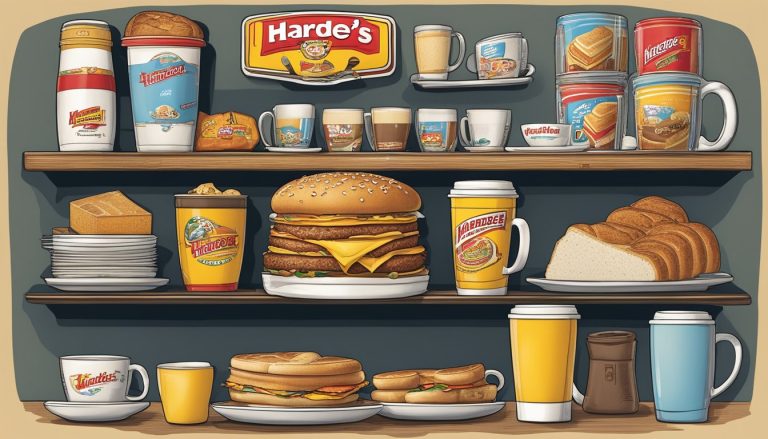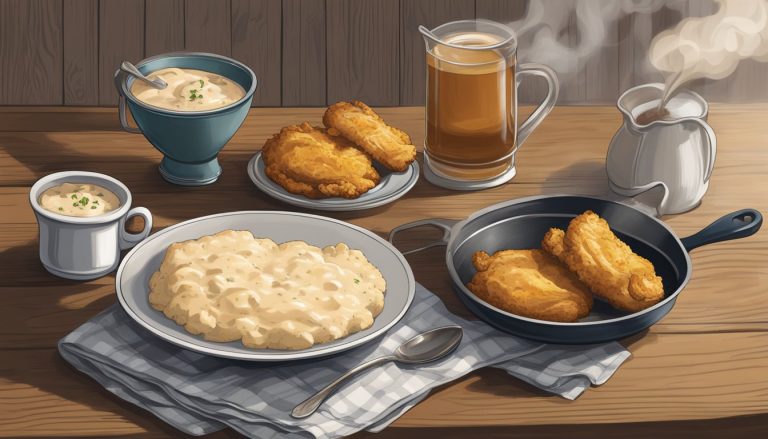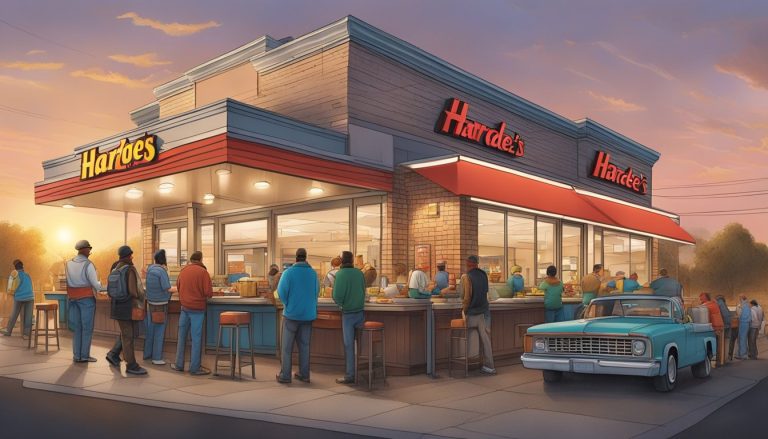Hardee’s, a beloved fast-food chain in the Southern and Midwestern United States, has humble origins that trace back to 1960 in Greenville, North Carolina. Wilber Hardee, the founder, started with a single restaurant that quickly gained popularity for its charbroiled burgers.
From its inception, Hardee’s focused on quality ingredients and innovative menu items, which helped it grow into a major player in the fast-food industry. The company’s success led to its acquisition by CKE Restaurants Holdings, Inc. in 1997, expanding its reach and influence.
Today, Hardee’s is known for its hearty breakfast offerings and thick Black Angus burgers. The chain has evolved significantly since its early days, but it continues to honor its roots by maintaining the charbroiling technique that made Wilber Hardee’s original burgers so popular. With thousands of locations across the country, Hardee’s stands as a testament to the power of quality food and strategic growth in the competitive fast-food market.
The Foundations of Hardee’s
Hardee’s origins trace back to a single hot dog stand in North Carolina. The brand’s rapid expansion and innovative approach to fast food set it apart in the early 1960s.
Wilber Hardee and the First Stand
Wilber Hardee, a seasoned restaurateur, opened Hot Dog City in Greenville, North Carolina in 1960. The small stand quickly gained popularity for its char-grilled hot dogs and fast service. Hardee’s business acumen and prior experience in the food industry proved invaluable.
Hot Dog City’s success prompted Hardee to explore new opportunities in the fast food market. He studied the operations of McDonald’s, which was revolutionizing the industry at the time. This research inspired Hardee to adapt and improve upon the concept for his own venture.
From Hot Dog City to Hardee’s Hamburgers
In September 1960, Wilber Hardee transformed Hot Dog City into Hardee’s Hamburgers. The new restaurant featured char-grilled burgers, a drive-through window, and efficient service – all at affordable prices. This combination proved irresistible to customers.
Hardee’s innovative approach paid off quickly. Within just four months, the restaurant generated a profit of over $9,500. This remarkable success caught the attention of Leonard Rawl and Jim Gardner, who saw potential for expansion.
The trio formed a partnership to franchise Hardee’s. They believed the concept could grow into a major chain across the region. This decision marked the beginning of Hardee’s rapid expansion beyond its North Carolina roots.
Expansion into an Empire

Hardee’s rapid growth transformed it from a local hot dog stand to a major fast food chain. Strategic franchising and partnerships fueled its expansion across regions and internationally.
The Launch of Franchising
Hardee’s began franchising in 1961, just one year after its founding. Jim Gardner and Leonard Rawls, two businessmen from Rocky Mount, NC, acquired franchise rights for the Rocky Mount area. Their success led to further franchise expansion. By 1963, Hardee’s had grown to 32 restaurants across North Carolina and Virginia.
The chain’s popularity in the Southeast attracted more franchisees. Hardee’s trademark charbroiled burgers and made-from-scratch biscuits proved a winning formula. Franchise growth accelerated in the late 1960s and 1970s as Hardee’s expanded into neighboring states.
Partnership Dynamics and Growth
In 1967, Rawls and Gardner bought out Wilber Hardee’s remaining shares. This move centralized control and enabled more aggressive expansion. The new ownership pushed growth into the Midwest and beyond. By 1975, Hardee’s had over 1,000 locations across 13 states.
Strategic partnerships boosted Hardee’s national presence. In 1981, Imasco Limited acquired Hardee’s, providing resources for further expansion. This led to Hardee’s first international locations in 1984.
The 1997 merger with Carl’s Jr. parent CKE Restaurants created a fast food powerhouse. This partnership strengthened Hardee’s menu offerings and market position. Today, Hardee’s operates over 1,800 restaurants in 14 countries.
Strategic Developments

Hardee’s implemented key changes to its menu and operations while undergoing significant corporate transitions. These moves shaped the company’s growth trajectory and market position over the decades.
Innovations in Menu and Service
Hardee’s pioneered several menu innovations that became industry standards. In 1962, they introduced the charbroiler, setting their burgers apart with a distinctive flame-grilled taste. The chain also became one of the first to offer a drive-thru window in 1973, enhancing convenience for customers.
Breakfast items emerged as a major focus. Hardee’s launched its Made From Scratch Biscuits in 1977, followed by Cinnamon ‘N’ Raisin Biscuits in 1978. These offerings helped establish Hardee’s as a breakfast destination.
In 2004, Hardee’s unveiled the Monster Thickburger, a massive 1,420-calorie burger that garnered significant media attention and boosted sales.
CKE Restaurants and Mergers
CKE Restaurants, parent company of Carl’s Jr., acquired Hardee’s in 1997 for $327 million. This merger combined two major fast-food players, creating a formidable presence in the industry.
The acquisition led to menu alignments between Hardee’s and Carl’s Jr. CKE introduced Carl’s Jr.’s Six Dollar Burger to Hardee’s locations, rebranded as the Thickburger.
In 2001, CKE purchased Taco Bell franchises from Yorkshire Global Restaurants, further diversifying its portfolio. This move allowed for co-branding opportunities at some Hardee’s locations.
CKE also acquired Burger Chef in 1996, integrating some of its popular menu items into Hardee’s offerings.
Hardee’s Identity and Brand Evolution

Hardee’s underwent significant changes in its visual identity and market positioning over the decades. The company’s logo and marketing strategies evolved to reflect its growing presence and changing consumer tastes.
Marketing and the Happy Star
Hardee’s iconic Happy Star logo emerged in the 1970s, becoming a key element of the brand’s identity. The smiling star character appeared in advertisements and on restaurant signage, creating a friendly and approachable image.
Hardee’s used the Happy Star to promote its charbroiled burgers and other menu items. The star’s prominence grew in the 1980s as Hardee’s expanded across the United States.
The company updated its logo periodically, refining the Happy Star design and modernizing the “Hardee’s” typeface. These changes aimed to keep the brand fresh while maintaining recognition.
Hardee’s Food Systems and the Urban Market
Hardee’s Food Systems focused on growth in urban areas during the 1980s and 1990s. The company acquired other fast food chains to increase its market share and diversify its offerings.
To appeal to urban consumers, Hardee’s introduced new menu items like Angus burgers. These premium options targeted adults seeking higher-quality fast food options.
The company also redesigned its restaurants to create a more upscale atmosphere. Modern interiors and updated exteriors helped Hardee’s compete with other fast food chains in urban markets.
Hardee’s marketing campaigns emphasized its charbroiled burgers and hearty breakfast options. These efforts positioned the brand as a destination for hungry customers seeking satisfying meals.
Current Reach and Impact

Hardee’s has grown from a single hot dog stand to a major player in the fast food industry. The chain’s influence extends across the United States and beyond, with a strong focus on quality burgers and innovative breakfast offerings.
Nationwide Presence and Consumer Impact
Hardee’s operates approximately 1,900 locations across the United States, primarily in the South and Midwest. The chain is known for its thick, charbroiled Angus beef burgers and indulgent breakfast items. Hardee’s has built a loyal customer base with its Made From Scratch Biscuits and Hand-Breaded Chicken Tenders.
CKE Restaurants Inc., Hardee’s parent company, has positioned the brand as a leader in premium fast food. This strategy has helped Hardee’s compete effectively against other major hamburger chains. The company’s menu innovations, such as the Thickburger line, have sparked industry trends and consumer interest.
International Connections and Future Aspirations
Hardee’s international presence is growing, with locations in the Middle East, Pakistan, and other regions. The brand operates under the name “Carl’s Jr.” in some markets, leveraging its sister company’s recognition.
Expansion plans include entering new domestic markets and increasing international footprint. Hardee’s aims to adapt its menu to local tastes while maintaining core offerings. The chain is also investing in digital ordering and delivery services to meet evolving consumer preferences.
Hardee’s continues to focus on product quality and customer service as key differentiators in the competitive fast food landscape. The company’s future strategy involves balancing growth with maintaining the brand’s reputation for hearty, satisfying meals.
The Culinary Experience

Hardee’s menu has evolved over the years to include a range of signature offerings and indulgent options. The chain’s culinary journey reflects changing consumer tastes and a commitment to hearty, satisfying meals.
Signature Offerings
Hardee’s began with humble 15-cent hamburgers but quickly expanded its menu. The introduction of the Thickburger line in 2003 marked a significant shift towards premium offerings. These 1/3 to 2/3 pound Angus beef burgers became a cornerstone of the menu.
The roast beef sandwich, introduced in the 1960s, remains a popular item. Hardee’s breakfast menu, launched in the 1970s, features made-from-scratch biscuits and has become a major draw for the chain.
Other notable menu items include hand-breaded chicken tenders and charbroiled chicken sandwiches. The chain also offers a variety of sides, from crispy curls to onion rings.
Nutrition and Caloric Spotlight
Hardee’s is known for its indulgent, high-calorie offerings. The Monster Thickburger, introduced in 2004, contains 1,420 calories and 107 grams of fat. This burger exemplifies the chain’s focus on hearty, satisfying meals.
However, Hardee’s has introduced some healthier options in recent years. The chain now offers turkey burgers and low-carb options. Salads and grilled chicken sandwiches provide lighter alternatives.
Nutritional information is readily available for all menu items. This transparency allows customers to make informed choices about their meals.
Economic and Market Influence

Hardee’s rapid expansion and strategic business moves shaped its economic trajectory and market position. The company’s growth from a single hot dog stand to a major fast food chain reflected broader trends in the American restaurant industry.
Business Ventures and Financial Growth
Wilber Hardee’s initial success with his first restaurant in Greenville, North Carolina, set the stage for rapid expansion. The company’s profit of over $9,500 in its first four months of operation caught the attention of potential investors. Hardee partnered with Leonard Rawls and Jim Gardner to sell franchises, fueling the chain’s growth.
By 1963, Hardee’s had expanded to 85 different restaurants across the southeastern United States. This growth attracted larger corporations, leading to Hardee’s stock being publicly traded. The company’s financial success continued, allowing it to acquire other restaurant chains and diversify its portfolio.
Competitive Positioning Among Giants
Hardee’s carved out a unique position in the fast food market, competing with established giants like Burger King. The chain differentiated itself through its focus on made-from-scratch biscuits and charbroiled burgers. This strategy helped Hardee’s maintain a strong presence in rural and lower-income markets in the Southeast and Midwest.
In 1997, CKE Restaurants, the parent company of Carl’s Jr., acquired a 51 percent controlling share of Hardee’s. This merger strengthened Hardee’s position in the market and allowed for shared resources and marketing strategies. The company continued to innovate its menu, with breakfast items becoming a significant driver of sales, accounting for nearly half of the chain’s revenue.




